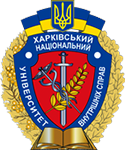Problematic issues related to forensic examination of written language and handwriting in pre-trial investigation
Abstract
The article retrospectively examines the genesis of theoretical and law enforcement issues, legislative and other regulatory frameworks relating to forensic examination of written language and handwriting with a view to improving them and further prospects for their use in forensic science and forensic examination. The genesis of the emergence and introduction of the first state, international, religious, economic and other types of documents, methods and types of their execution and registration, and the improvement of the historical documentary system in our country and the persons who could execute them in various fields of use in the country and in ensuring the vital activity of the population, as well as the mechanism of the first identification actions with this category of writing and handwriting are investigated. The role, essence and significance of written language, handwriting and documentary studies in their historical aspect in terms of formation, improvement and use in establishing and identifying the person who executed a certain document or written text are determined. Separate objectives have been identified to improve knowledge, including subculture and skills, on the detection, establishment and preparation for forensic examination of written language and handwriting by detectives, investigators, forensic specialists, experts, prosecutors, investigating judges and court personnel, taking into account the requirements of the time regarding the use by criminals of documents made both by conventional means and with the help of computer equipment, the Internet, mobile communications, as well as other modern telecommunications achievements and digitalisation of the pre-trial process. The article investigates the peculiarities of forensic methods of examination of written language and handwriting objects to be taken into account by officials who, in particular, conduct pre-trial investigation of criminal offences committed with the use of ordinary or forged written documents, handwriting forgery, and other criminal methods of their use with a view to qualitative preparation and conduct of relevant handwriting and authenticity examinations. Based on the results of the study, the author's scientific positions and ways of solving the existing problematic issues have been developed.
Downloads
References
Kuznietsov, M. V., Kantsydailo, O. O., Sydorenko, A. M., & Korzh-Ikaieva, T. H. (2019). Underworld tattoo and body tattoo. Kyiv.
Yukhno, O. O. (2010). Improvement of the culture of speech, paralinguistic, extralinguistic and psychological knowledge in operational-search prevention and disclosure of crimes. South Ukrainian Law Journal, 1, 291–299.
Vitvitskyi, S. S., Merdova, O. M., Petryshyn, L. P., Sakhno, A. P., & Khozlu, I. K. (2022). Legal Documentation Studies (2th ed.) (S. S. Vitvitskyi, Ed.). DonSUIA.
Tetarchuk, I. V., & Diakiv, T. Ye. (2016). Legal Documentation Studies. Center of educational literature.
Terziev, N. V., & Eisman, A. A. (1949). Introduction to Forensic Document Research. Moscow.
Volobuiev, A. F., Danshyn, M. V., & Tishchenko, A. V. et al. (2018). Criminology (Vol. 1) (A. F. Volobuiev, R. L. Stepaniuk, V. O. Maliarova, Eds.). KhNUIA.
Klymenko, M. I. (1970). Forensic significance of signs characterizing the degree of literacy of the manuscript executor in Ukrainian. Criminalistics and Forensics, 7, 178–183.
Klymenko, M. I., & Tsypeniuk, S. A. (1971). Conducting handwriting examinations in order to solve problems and establish group affiliation. Criminalistics and Forensics, 8, 157–158.
Derkach, N. M. (2019). Operational-search counteraction to illegal trafficking of firearms [Candidate thesis, Kharkiv National University of Internal Affairs].
Copyright (c) 2023 O. O. Yukhno, H. V. Smirnov

This work is licensed under a Creative Commons Attribution 4.0 International License.



